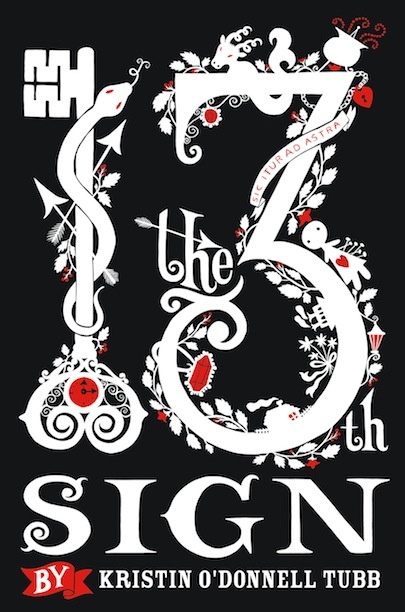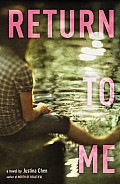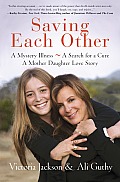 If you’re looking for something to show your book club pride, you may want to consider the new line of Mother Daughter Book Club products available at Cafe Press.com. Items available to order include a drinking mug, a book tote, a journal, t-shirts, a teddy bear, a refrigerator magnet, an apr
If you’re looking for something to show your book club pride, you may want to consider the new line of Mother Daughter Book Club products available at Cafe Press.com. Items available to order include a drinking mug, a book tote, a journal, t-shirts, a teddy bear, a refrigerator magnet, an apr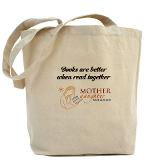 on, a calendar, a bumper sticker, and coasters. Items come with the saying “Books are better when read together,” and the Mother Daughter Book Club.com logo. Don’t see what you’re looking for? Drop me a line at info(at)motherdaughterbookclub.com and I’ll create something just for you.
on, a calendar, a bumper sticker, and coasters. Items come with the saying “Books are better when read together,” and the Mother Daughter Book Club.com logo. Don’t see what you’re looking for? Drop me a line at info(at)motherdaughterbookclub.com and I’ll create something just for you.
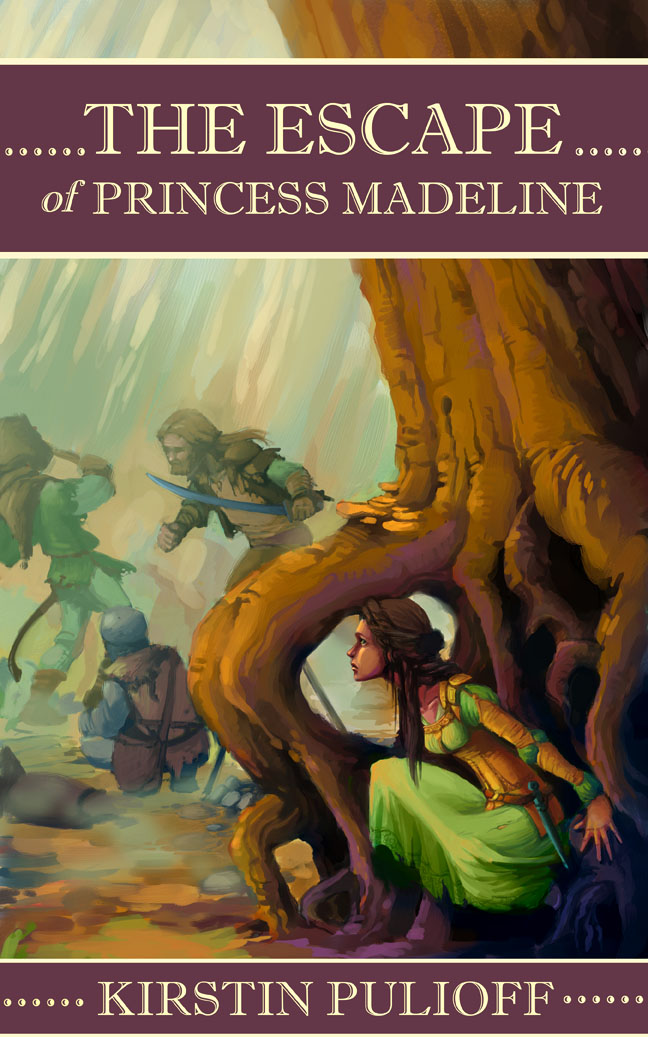 Princess Madeleine is not happy. Her father has arranged a ball for her 16th birthday so can choose a suitable husband for her. Madeline may have known this day was coming, but she doesn’t want to be paraded around like an animal going to the highest bidder. After the ball, and a tournament the next day, she decides to run away and forge her own future. But it’s difficult for a princess to get far without attracting the wrong kinds of attention. Kidnapped, she struggles to free herself while also working to set herself on a path to independence.
Princess Madeleine is not happy. Her father has arranged a ball for her 16th birthday so can choose a suitable husband for her. Madeline may have known this day was coming, but she doesn’t want to be paraded around like an animal going to the highest bidder. After the ball, and a tournament the next day, she decides to run away and forge her own future. But it’s difficult for a princess to get far without attracting the wrong kinds of attention. Kidnapped, she struggles to free herself while also working to set herself on a path to independence.
The Escape of Princess Madeleine by Kirstin Pulioff shows a very independent-minded princess who is determined to set her own destiny. Not waiting to be rescued by a knight in shining armor, she plots her own escape. But she can’t know the forces that have been set into play since she left her castle and how that will affect her plans for her future. Madeleine is a feisty model for modern girls who like a princess story with a twist.
The author provided me with a copy of this book in exchange for my honest opinion in this review.
When Jalen finds a mysterious, locked book called The Keypers of the Zodiac in a voodoo shop in New Orleans, she is irresistibly drawn to it. But when she finds a way to unlock it, she sets off a chain of events that shifts the signs of the zodiac to make way for a new one, Ophiuchus.
Not only does everyone’s personality shift as their birth dates place them in a different sign than they were in before, but suddenly Jalen finds herself facing challenges from each zodiac. If she wants to make it out alive, and change everything back to the way it was before, she’ll have to conquer her fears, draw on skills she didn’t know she had, and get help from her best friends.
The 13th Sign by Kristin O’Donnell Tubb goes on a wild ride through the city of New Orleans as Jalen and her friends face one challenge after another while they make their way to Jalen’s grandmother, who is in the hospital. As Jalen faces a challenge from each sign of the zodiac she also must face her fears: of heights, of the reason for her father’s disappearance when she was young, of her grandmother dying, and of her friends changing. Along the way she grows more confident in the decisions she makes and more determined to set things right.
Each time Jalen faces a sign of the zodiac she learns something about the strengths and weaknesses of the sign—and the people who were born under it. She learns that winning isn’t always about conquering, and that sometimes she needs to trust her own ability to make decisions instead of deferring to others.
You’ll find dates for the traditional and the revised zodiac in the back of the book, and it’s fun to think about how your own personality may change if one day you woke up and instead of being a Virgo you were a Leo. Whether you follow the zodiac or not, it could make for an interesting discussion, along with issues of trust, having self-confidence to do what you think is right, and relying on friends when you need them.
The author gave me a copy of this book in exchange for my honest review.
The Chinese New Year, the Year of the Snake, begins February 10. If you are lucky enough to live near a large Chinese community, you can look for local celebrations and buy food from restaurants and bakeries. But if you are not able to get the real thing, you may want to get a tasted of it by cooking up a batch of these Moon cakes, which are often served during Chinese festivals. The ones you get in Chinese bakeries can be really elaborate, and while this recipe ends up with moon cakes that are more like cookies than what you’ll find in a traditional bakery, these are easy to make at home. If you make them for a book club meeting, you can mix up the dough before your group gets together, and then you can all take part in making the cakes. That way you can eat them warm out of the oven. You may also want to try your hand at making a snake. For instructions to make several kinds, head over to Danielle’s Place of Crafts and Activities.
Mooncakes
Serves about 8
¼ cup granulated sugar
2 egg yolks
½ cup butter, softened
1 cup all-purpose flour
1 cup red bean paste (or your favorite jam if red bean paste is hard to find)
Preheat the oven to 375 degrees Fahrenheit.
In a large bowl, stir together butter, sugar and one egg yolk until well blended. Add the flour and fold in well until a firm dough is formed.
Pat dough into ball, wrap it in plastic and refrigerate for 30 minute.
Remove dough from refrigerator and pinch off balls about 1-1/2” in diameter. Roll each ball in your hands until round. Using your thumb, make an indentation in the center of each moon cake and fill it with red bean paste or jam.
Line up cakes on cookie sheet. Beat the second egg yolk and brush on the tops of the cakes. Bake for about 20 minutes, or until golden brown. (Check on progress after 15 minutes.)
Reb, short for Rebecca, is looking forward to trading her home on remote Lewis Island in Washington State for the bustle of college life at Columbia. She can’t wait to escape from her stifling mother and live her own life. But that life takes a few twists and turns: first her parents announce that the family is moving to New Jersey for her dad’s new job, then after everyone moves across the country, Reb’s dad says he’s leaving to be with another woman.
Reeling from the changes, Reb suddenly starts to question everything she knows about her mother, her father, her boyfriend, other family members and her future. Answers start to come only after she seeks sanctuary from the pain and starts to listen to her inner convictions.
Return to Me by Justina Chen looks at a time that is challenging for most teens, leaving home for the world of college, and adds the stress of a family breaking up. For Reb, it’s a wake up call to really look at people the way they are, not as she wishes or expects them to be. She also realizes that she must listen to her own inner voice and put more trust in it as opposed to following what everyone expects her to do.
This is a great book for mother-daughter book clubs with girls ages 14 and up to read and discuss. First, there’s a mother-daughter book club in the book, and groups may want to talk about how the fictional characters supported each other during hard times and how a real life club can do that as well. Also, high school and pre-college can be very confusing for girls, who often don’t know what they would like to pursue after high school and how they make decisions about what to do. Talking about Reb’s situation may help them come to some realizations of their own.
The publisher provided me with a copy of this book in exchange for my honest opinion in this review.
You’ll often find good memoirs on best-selling lists for lots of reasons:
- They provide insight into medical, social and other issues that you may be dealing with
- They help you learn about events or actions that take place all over the world
- They let you see inside a well-known person’s private life
- They can be funny
- They often tell a good story
Good memoirs written for kids can do all of those things while appealing to a younger audience. And while memoir may not be the first thing that comes to mind when you’re helping your kids choose books to read, memoir may be just the thing to spark an interest in reluctant readers especially. Here’s a list of five memoirs that children and adults will find fascinating.
Boy by Roald Dahl—This one goes on all my lists for several reasons: it’s funny, it provides insight into life in the early 1900s when Dahl was growing up, and it reveals some of the real-life events and characters that make appearances on the pages of Dahl’s fictional books.
Zlata’s Diary by Zlata Filipovic—With the eyes of an 11-year-old girl, Zlata describes what it’s like to live in a war zone while letting kids learn about the somewhat reason conflict in Sarajevo.
Red Scarf Girl by Ji-Li Jiang—Jiang’s description of life in China during the Cultural Revolution is fascinating as is watching her transition from blindly believing the Communist Party line to questioning what it promotes.
A Girl from Yamhill by Beverly Cleary—Cleary was born in a small community and moved into the city when she was still young. Her description of growing up, particularly her comments about school and education, should spark interesting discussions about the differences between her times and today.
Marshfield Dreams: When I Was a Kid by Ralph Fletcher—Fletcher’s boyhood antics are funny to read about, and kids today are likely to marvel at the freedom kids in Fletcher’s youth had to roam the neighborhood on their own.
Victoria Jackson faced every mother’s worst nightmare when she was told that her vibrant, seemingly healthy 14-year-old daughter has a rare autoimmune disease and that she may only have four to six years to live. Instead of accepting that diagnosis as inevitable, Jackson set about to change the prognosis by forming a foundation that would bring together experts from around the globe to work on a cure. She and her daughter tell the story of that quest in the book, Saving Each Other: A Mystery Illness, A Search for a Cure, A Mother Daughter Love Story by Victoria Jackson and Ali Guthy.
Jackson is exactly the kind of person you would want in your corner if you were ever facing incredible odds. Growing up disadvantaged, she rebelled as a teenager and never finished high school. Yet through her savvy and tenacity, she turned her ability to work wonders with cosmetics into a career first and then into an empire. Jackson’s curiosity, her ability to focus on doing what she needs to do to achieve her goals and her tireless pursuit of those goals served her well in life. They are also the traits that let her push even harder when she is working for her daughter’s health. Yet Jackson is also candid about the demons she faced along the way, including crippling anxiety that kept her from flying for many years.
As the daughter with the illness, Ali Guthy matures through the telling of the story as she progresses from a 14-year-old girl who doesn’t want to know what she has or what it means to her life, to a young woman who is willing to face the challenges of a disease that is often painful and always frightening. After years of letting her mother lead the charge, Guthy bravely steps into the fray and works alongside her.
The Jackson-Guthy family, fortunately, has resources that many of us do not, which means they could set up a foundation and fund research that will ultimately help many other people as well. The proceeds from the book directly support scientific and clinical research for Nueromyelitis Optica, or NMO, which is the disease that Guthy lives with.
Saving Each Other is a story of love and of hope. It shows that while disease and other frightening disasters can confront any of us at any time, we can choose to respond with courage and spirit even when the odds are stacked against us.
I have one copy of this uplifting story to give away to a reader in the U.S. Just leave a comment below telling us something inspiring about your mother or your daughter (comment by midnight Pacific Standard Time on February 14 to be entered into the giveaway). Please note: the giveaway is closed. Congratulations to Carol on winning.
The author provided me with a copy of this book in exchange for my honest review.
In Al Capone Does My Shirts by Gennifer Choldenko, Moose and Natalie like to eat graham cracker sandwiches as a treat. Whether you are reading this book for your book club or not, it’s sure to be a hit with your group’s members when you serve this at a meeting.
Graham Cracker Sandwiches
Here are a few ideas for creative fillings to go between two graham cracker squares:
Creamy Peanut Butter Filling
- ½ cup butter or margarine at room temperature
- 4 cups of powdered sugar
- 4 tablespoons light cream or milk
- ½ cup peanut butter
- 1 teaspoon of vanilla
Beat together softened butter and 1 cup of powdered sugar. Add the remaining powdered sugar and the cream or milk, mixing one cup of powdered sugar followed by one tablespoon of cream or milk at a time. Add in the peanut butter and vanilla. Adjust the consistency to make it more spreadable by adding milk a little at a time.
Cream Cheese and Jam Filling
- Cream cheese at room temperature
- Variety of jams—strawberry, blackberry, blueberry, etc.
Spread cream cheese and desired jam evenly on graham cracker halves.
S’mores Filling
- Marshmallows
- Chocolate bars, broken into square pieces
Layer marshmallows and chocolate between graham crackers. Heat for 10 to 12 seconds in microwave oven to soften the marshmallows and chocolate.
Other filling ideas:
- Cheese slices
- Fruit
Serve lemonade to drink.

